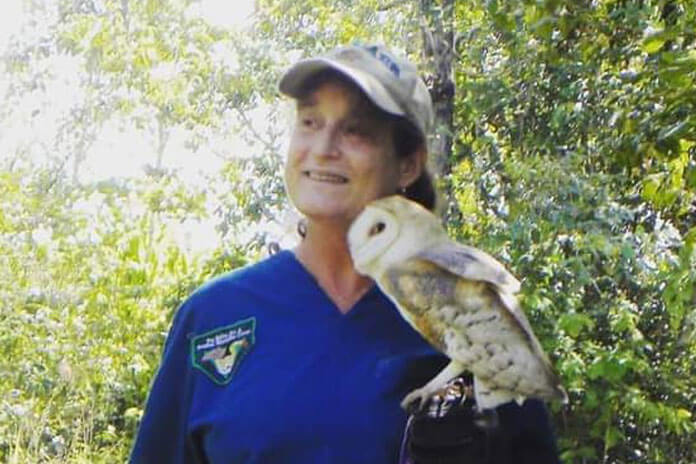Sharon Matola was far more than a gringa pioneer; she was a bonafide force-of-nature. Life started in mediocrity for her. She’d married a dentist and moved to Iowa, a place “with way too much sky,” and a lifestyle that was not feeding her soul. After an epiphany of sorts, she’d had literally hopped a boxcar, ending up in Sarasota, Florida, where she enrolled in college to study Biology. As Sarasota was also the winter home of Ringling Brothers’ Barnum and Bailey Circus, one day she found herself hanging around a circus compound, watching an old Romanian trainer working with a cageful of big cats. At the end of the session, Sharon had told the man she’d like to be his apprentice. He rolled up his sleeves and showed her the condition of his bare arms. “If you want to work for me,” he’d replied, “Go home, take off your clothes, and stand before a mirror. Look yourself in the eye and say, ‘If I’m going to work with wild animals, I’m going to get scarred.’ If you’re OK with that, come back tomorrow morning at 8:00 a.m.” She had done as she was told. The next day, she was there at 7:45 a.m. (From “The Last Flight of the Scarlett Macaw,” by Bruce Barcott)
Sharon ended up being fluent in Russian, and indeed learned the dangerous art of tiger-taming. She later found herself — with her tall, lithe, white, American-girl body — clad in a sequined bikini in the center ring of a Mexican circus. Although her love of big cats would endure for a lifetime, she also ended up with a degree in mycology (fungi), and became one of the world’s foremost experts on the scarlet macaw and Belize’s own Baird’s tapir.
When I first knew him in the late 70’s, Richard Foster, future icon of Belizean cinematography, lived in a simple, raised wooden house about five miles west of what was then called Gracie Rock, the main mountaintop marl-quarry that had built the Western Highway. It was an open, one-room structure – neat, clean, and spartan. There was a woven hammock, plus a ready-stuffed backpack on a hook, binoculars, a machete, two hats, and photographer’s vest with a bottle of bug spray protruding from a pocket. Other personal items were stacked in corners, with a sense of orderly abandonment. Not so his cameras. They were packed inside pigtail buckets full of silica gel. Belize was where cameras came to die, he’d told me, falling victim to a nasty green mold that would grow inside the lenses in a week. Richard was very soft-spoken, very British, and unfailingly polite, but had all of the attributes of the distracted artist. You could tell that his mind was constantly full of images, camera angles, filming plans, and execution details, and his body just pretty much followed his mind around, wherever it went.
Now, in 1982, Richard found himself in a dilemma. Selva Verde, his first movie, was scheduled to continue shooting in Costa Rica and Panama, for additional footage on tree frogs and sloths. But, in the course of the Belize filming, he had acquired a margay, a rehabbed jaguar, a few peccary, and a kinkajou. These animals, already acclimated to humans, could not be safely turned loose back into the rainforest. It was then, in 1982, that Richard Foster had met Sharon Matola, and hired her to care for them. These exotic animals, along with “one tarantula, and two and a half snakes” – as we used to tease Richard – represented the humble beginnings of the Belize Zoo.
In 1999, Sharon would go on to become a defender of the Macal River when the Chalillo Dam project* was being conceived. The scarlet macaws, of which there were only about 200 left in Belize, would fly across the Maya Mountains from Red Bank, and nest in the giant trees in the upper Macal valley, where the high water floods had ripped away large limbs and left natural cavities for the eggs and hatchlings. If the Chalillo Dam were built, this essential nesting ground would be drowned in the resulting reservoirs. When the Belize government named her “an enemy of the people,” and she started receiving death threats, she knew she was on the right side of wildlife justice and ecology. Eventually, the battle was indeed lost. The dam was completed in 2005. The macaws tried to nest along the Raspaculo, but it did not have the features necessary to maintain the flock. Through the years, two other dams were built. Indeed, the reservoirs filled, the river waters below became silted and gray, and unfit for swimming. The mercury levels rose, the fish died, and our beloved Macal became a mere vestige of its former self. Never again would we see the glassy green of the dry, or the roaring brown deluges of the wet. No. It would never be the same.
Sharon Matola, who ran The Belize Zoo for almost 40 years — superhero, wonder-woman, Queen Defender of Water and Wildlife, passed away yesterday at St. Luke’s in Belmopan at age 66. She will forever hold a unique place in our hearts, and Belizean history, that no other can claim.
Rest in peace, Sharon. Your legacy lives on…
Nancy R. Koerner, Belize National Historical Society, contributing author of “Recollections of a Gringa Pioneer in Cayo” series
*Chalillo Dam source information courtesy of “The Last Flight of the Scarlet Macaw” by Bruce Barcott

